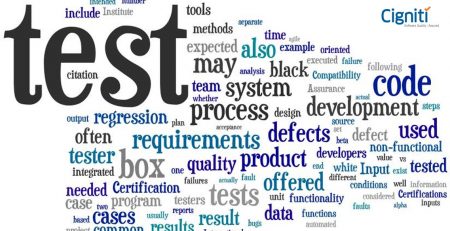Test Management – Managing Large Scale Projects
The need for continuous improvement and sustenance of quality in a software development is one that cannot be ignored. Apps, products, tools et al – all use software that is always at the risk of having one or the other bug or issue. The availability of a plethora of configurations, mobiles, browsers, etc. further adds on to the complexity of the situation.
Therefore, it is but obvious how critical is the need and importance of an end-to-end process of software validation and testing to be able to attain the desired quality. This, in turn, necessitates the understanding of what Test Management is all about.
This article briefly covers what Test Management entails, some of the challenges faced during implementation of the framework, and some best practices that might be followed to overcome the obstacles and emerge as a market leader.
What is Test Management and what does it entail?
Per Wiki, “Test management most commonly refers to the activity of managing the computer software testing process.”
In more generalized terms, test management is the name given to the process used to successfully drive and control an organizations testing activities.
The basic underlying process of a test management framework requires a testing team to plan, develop, execute, and assess all test assets, artifacts, and activities that fall within the purview of Software Testing Lifecycle (STLC). The success of this flow depends on how well the efforts for all the activities were coordinated – even if the teams are collocated.
Different Phases of STLC
The different phases of the STLC are described briefly below:
- Managing Test assets/artifacts: This refers to the proper maintenance of items to be tested, along with the tools required for performing the actual tests. Test assets may be in the form of software, scripts, data, or hardware.
- Planning addresses the following questions: what test cases to test, where to manage the documentation related to the tests, and when to perform the test iterations.
- Development/Authoring refers to capturing the specific requirements for successfully completing the given tests.
- Execution covers the process of sequentially running the assembled scripts for generating the desired result.
- Assessing/Reporting entails the process of analyzing the test results and then sharing the reports. These reports form the basis of determining the current status of the tests conducted along with the overall quality of the product being tested.
The overall effort generates a huge amount of data based on which metrics are collected that help measure and track the quality goals of the project.
Test Management Challenges & Issues
There are many challenges that an organization faces while implementing and following STLC. A few of these challenges are mentioned below in brief.
- Not enough/insufficient time to test products due to tight deadlines
- Not enough/lack of resources with better opportunities cropping up everywhere
- Co-located/distributed testing teams
- Frequent changes made in requirements
- Development teams do not update changes on time, or provide the right information
Best Practices to Overcome the Challenges
To increase ROI, organizations need to upgrade their software testing skills and come out of the older document-based methods. To overcome the challenges such as those mentioned above, organizations may try to use the following well-known practices to implement a successful test management system:
- Begin the testing activities early on in the cycle
- Perform iterative tests
- Reuse test assets and improve time spent every time
- Utilize testing based on requirements
- Ensure proper and effective coordination between co-located testing resources to leverage the best use of skills
- Define & enforce flexible testing processes
- Coordinate & integrate with the Development teams – use shift-left practices of DevOps
- Communicate the correct status at the right time
- Focus on goals and results
- As someone said – “To save time, automate, automate, automate!”
- Effectively track and redress defects (commonly known as bugs) as they can break a product
- Manage the testing team carefully and tactfully. This plays a very crucial role in the success of an organizations growth.
- Follow different testing strategies for different types of tests to be conducted – say security, performance, agile, etc. In essence, the testing strategy must be devised so as to best fit the test management framework.
- Utilize specific Test Management Tools. There are several commercial and open source test management tools available in the market today. While most of these test management tools need to be installed in-house, there are others that can be accessed as Software as a Service (SaaS). For example, HP ALM/Quality center, QAComplete, Silk Central, Zephyr, JIRA, and IBM Rational Quality Manager.
Conclusion
In essence, to overcome the challenges of implementing a successful Test Management framework and to reap the great benefits of the same, try to follow the best practices suggested herein. Doing so will definitely improve product quality.
Cigniti Technologies is an organization specializing in the area of Test Management that has a team of highly skilled, co-located software testing professionals who ensure delivery of quality products that help quicker go-to-market and also control efforts and expenses.
PS: Watch this space next week for further details on the challenges to be overcome and best practices for setting up a successful test management framework.





Leave a Reply